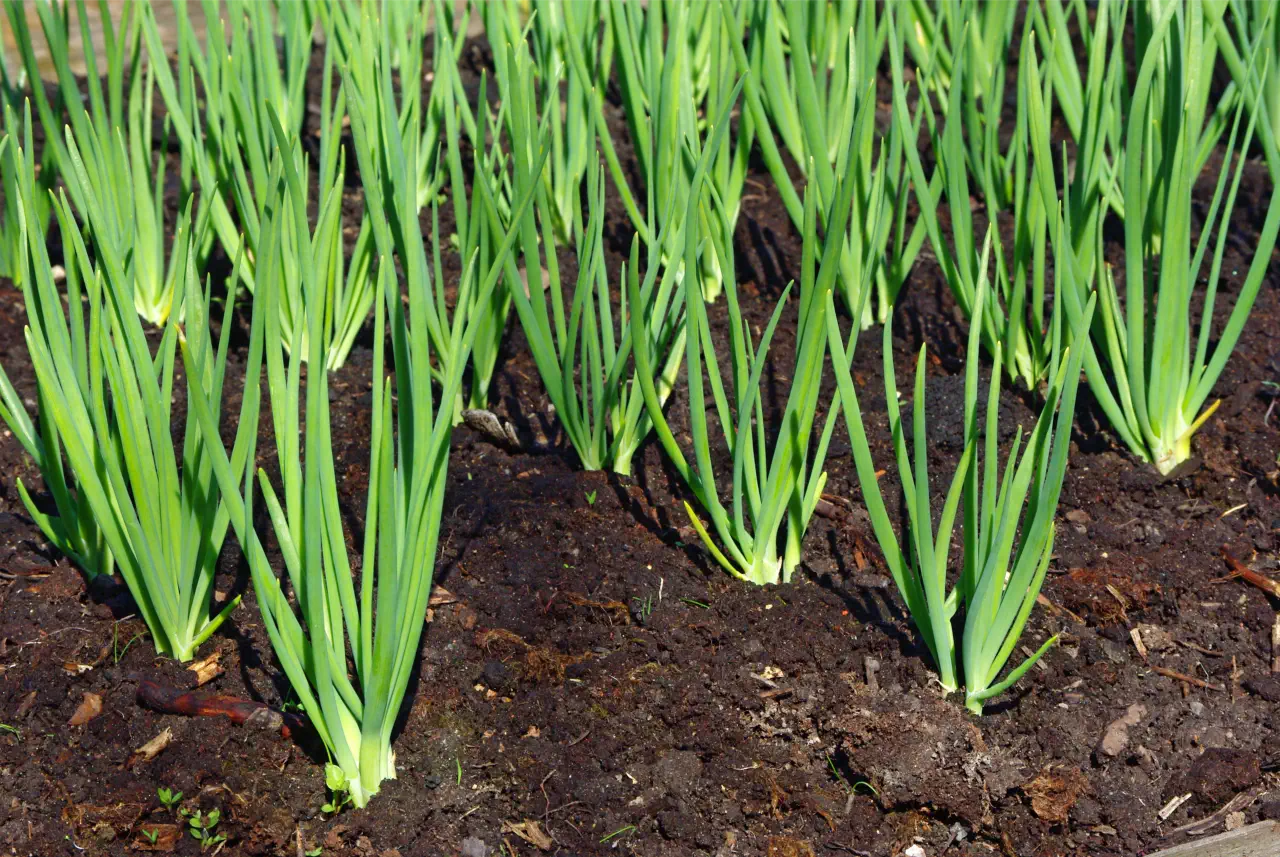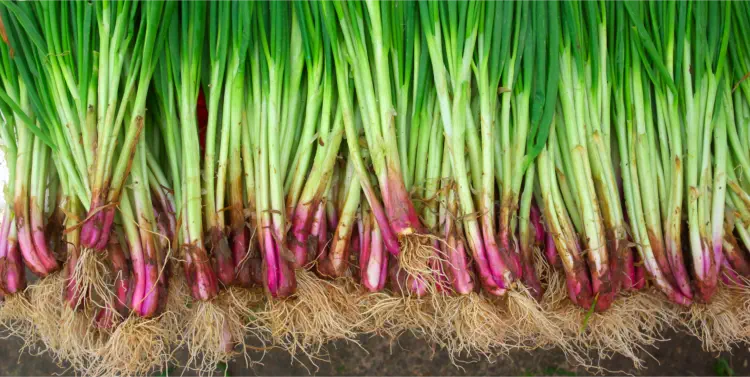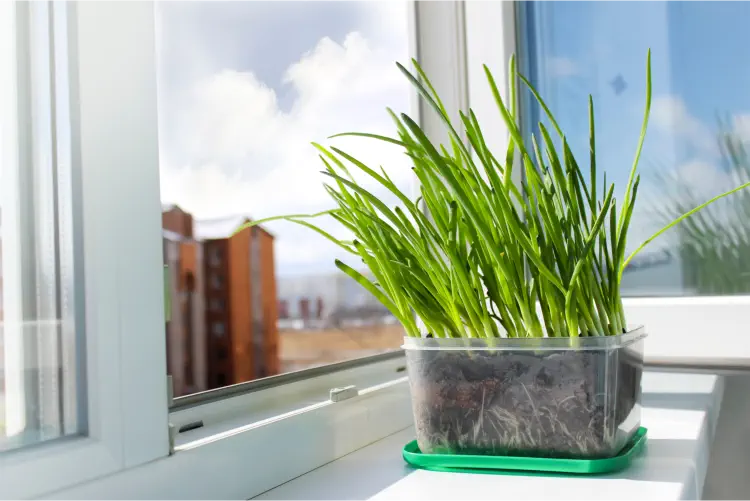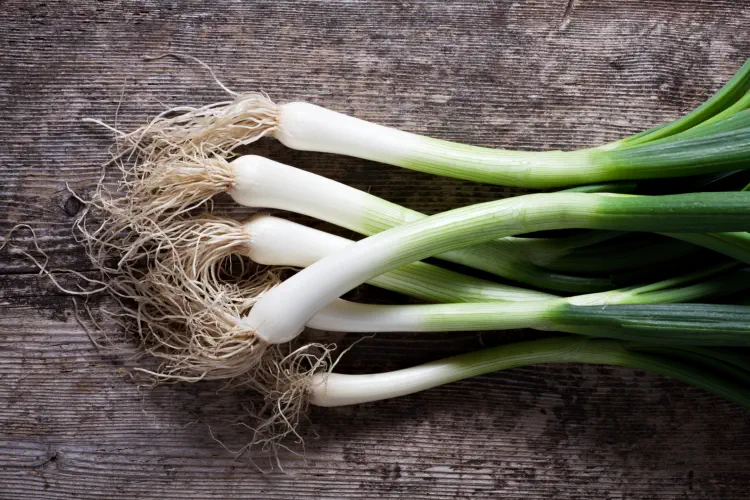Blight can wipe out your crop. Choosing the right blight resistant seed potatoes is crucial for a healthy harvest.
Read on to find out the top varieties of blight resistant seed potatoes that will save your yield....

Are you looking to grow spring onions for a season long supply? We'll cut the fluff and offer clear, actionable advice to get your spring onions from seed to harvest. Discover the wide varieties, optimal sowing times, and care techniques to enjoy a continuous, flavourful crop of home grown spring onions.
Sow your spring onions from February onwards. Do this every 3-4 weeks for a continual harvest. Bonus points if you sow in September for a spring crop!
Prep your garden bed with soil conditioner and granulated fertiliser before sowing, plant in a sunny spot, and keep those pests at bay.
Imagine you are at your local garden centre and you see an array of spring onion seeds. How do you choose the right one? Well, it’s not as complicated as it seems! Selecting the right spring onion varieties is crucial for fulfilling specific gardening needs and achieving a successful continuous harvest. You can choose from a wide variety of spring onions, including:
Spring Onion White Lisbon
Salad Onion Redmate
Marksman F1 Hybrid
Japanese Bunching or Ishikura
There’s also the clump-forming Japanese Bunching or Ishikura, which is a mouthful to say but a delight to grow.
Each variety within the onion family possesses unique traits, such as the mild flavor of Spring Onion White Lisbon and Salad Onion Redmate, and the elongated stems without bulbs of the Japanese Bunching or Ishikura. When choosing varieties, consider the plant’s suitability for your climate and required sowing times. Hardy varieties are ideal for early or late sowings to ensure a successful crop.

Among the red-skinned varieties, the North Holland Blood Red spring onions are a standout. With their strong flavor and adaptability to diverse climates and seasons, they are a favorite among gardeners. The Apache variety shares similar characteristics.
Another excellent choice, especially for resilience in the winter, is the Salad Onion Ramrod. This variety has stiff leaved Lisbon type characteristics and is ideal for spring, late summer, and autumn cropping.
Timing is everything, especially when it comes to sowing spring onion seeds. The optimal sowing times for spring onions in general are from February to June. To ensure a steady supply of spring onions, it is recommended to plant new batches every three to four weeks. This practice is especially important from March to August for optimal yield. A bonus sowing in September can reward you with a spring harvest.
To extend the sowing periods beyond the usual seasonal times, consider starting sowing in a greenhouse in early spring or late autumn. And from March onwards, sowing outdoors allows you to enjoy a consistent supply of spring onions throughout the summer and into early autumn.
A robust Japanese bunching salad onion variety, renowned for its vigorous growth and flavour......
Average Contents : 500 seeds
Marksman is a F1 Hybrid and probably the best salad type for later sowings.....
Average Contents : 500 seeds
Ramrod is a very high performing, winter hardy, stiff leaved Lisbon type.....
Average Contents : 500 seeds
Redmate is a versatile variety. It can be used not only as a.....
Average Contents : 500 seeds
White Lisbon is the standard variety for bulbing salad.....
Average Contents : 500 seeds
Now, let’s put on our gardening gloves and prepare the perfect bed for your spring onions. Here’s how:
Incorporate soil conditioner or well-rotted manure in the autumn.
Add granulated fertilizer a couple of weeks before sowing to enhance soil drainage and fertility.
Prepare the soil to a fine tilth before sowing by compacting and smoothing the soil for a fine, crumbly surface texture.
Choose an open and sunny position for planting spring onions as full sun exposure is critical for their healthy growth. Retain soil moisture and prevent weed growth by adding a thick layer of mulch around spring onion plants. Remember to water carefully, ensuring it is adequate without creating waterlogged conditions to reduce the risk of disease.
Now that we have the perfect bed ready, it’s time to introduce the spring onion seeds to their new home. Whether you choose to sow the seeds directly outdoors or start them off indoors, there are a few techniques to keep in mind.
For direct sowing outdoors, start by creating shallow channels, known as drills, approximately 0.5cm deep. The germination temperature should be around 14℃ for spring onion seeds. Ensure that the row spacing is maintained at 30cm, suitable for varieties such as Salad Onion Redmate and Salad Onion Ramrod.
Sow seeds, specifically spring onion seeds, in rows 1cm to 2cm deep, which provides the seeds with enough cover to germinate effectively. To protect your newly sown spring onions from seed from the pesky onion flies, use insect-proof netting.

If you choose to start your spring onions indoors, follow these steps to grow spring onions:
Select containers with good drainage holes.
Fill the containers with good potting compost up to approximately 3 cm from the top.
Scatter the spring onion seeds thinly over the prepared compost surface in the container.
After sowing, cover the spring onion seeds with about 1.5 cm of compost for optimal growth conditions. Water the newly planted seeds sparingly to maintain moist soil without overwatering, which is conducive to the germination and growth of the spring onions.
As your spring onions start their growth journey, they’ll need a little TLC. During dry periods, it is crucial to water spring onions regularly to keep the soil moisture level consistent. Weeding is also important to prevent competition for light and water. Do this carefully by hand to avoid damaging the shallow roots of the spring onions.
To protect spring onions from pests like thrips, which can cause damage to the foliage, consider planting mint as a natural deterrent.
Like any plant, spring onions can also fall prey to fungal diseases such as onion white rot and onion downy mildew. Onion white rot is a soil-born fungus characterized by yellowing and wilting of spring onion leaves and rotting of the bulbs. Onion downy mildew, on the other hand, targets the leaves of spring onions, leading to a blotchy appearance, stunted growth, and in severe cases, total leaf loss.
Prevention is always better than cure. Onion white rot can persist in soil for many years as sclerotia, thus requiring crop rotation and avoiding the reuse of contaminated soil. Onion downy mildew can be prevented by ensuring good plant spacing, removing any affected leaves, and opting to water the crops in the morning.
After nurturing your spring onions with love and care, it’s time for the rewarding part - the harvest! As spring onions grow, they are typically ready to be harvested in about eight weeks after sowing. At the time of harvesting, the plants should be about 15cm tall, and the bulb diameter should be less than 2.5cm across.
To harvest without damaging the spring onions, loosen the soil around them with a hand fork or trowel before pulling them up gently from the base near the soil surface.
Post-harvest, you might have more spring onions than you can use at once. No worries - they can be stored at room temperature for 2-3 days. For a freshness of up to a week, store spring onions in a glass of water on a kitchen side or windowsill, ensuring to change the water when it becomes cloudy.
In the refrigerator, spring onions are best preserved for up to two weeks when placed in a sealed plastic bag inside the crisper drawer.
Did you know spring onions can be excellent companion plants in the garden? As pest control, salad onions can repel certain pests like aphids, carrot flies, and cabbage worms, helping to protect nearby crops from infestation. They also attract beneficial insects such as ladybirds and hoverflies, which prey on garden pests, thereby promoting a healthier ecosystem in your garden.
Their dense foliage can help suppress weed growth, reducing the need for manual weeding and minimizing competition for nutrients and water among plants. Salad onions have shallow root systems that complement the deeper roots of many slower growing vegetables. This means they can be grown alongside crops like tomatoes, peppers, or lettuce without competing for resources.

Now comes the best part - enjoying the fruits (or rather, onions) of your labour! Your home-grown spring onions, or your own spring onions, can bring a fresh and mild flavour to a wide variety of dishes. From a wholesome charred spring onion and olive rice salad to a Thai-inspired prawn stir-fry with added ginger and green chili, the culinary uses of spring onions are virtually endless.
Spring onions can also be incorporated in baked goods. The savoury element they add to triple cheese and onion muffins and soda bread with oats, cheese, and spring onions is simply irresistible.
For snacks and appetizers, spring onions add a fresh twist and crisp texture to dishes like sweetcorn and spring onion fritters, pork and chive dumplings, spring onion-infused quesadillas combined with chillies and sweetcorn, and stir fries.
Growing your own spring onions is a rewarding journey from seed to harvest. It’s a wonderful way to enjoy fresh, home-grown produce and to add a burst of freshness to your meals. Whether you’re a seasoned gardener or a beginner, we hope this guide has inspired you to plant your own spring onions and enjoy the fruits of your labour.